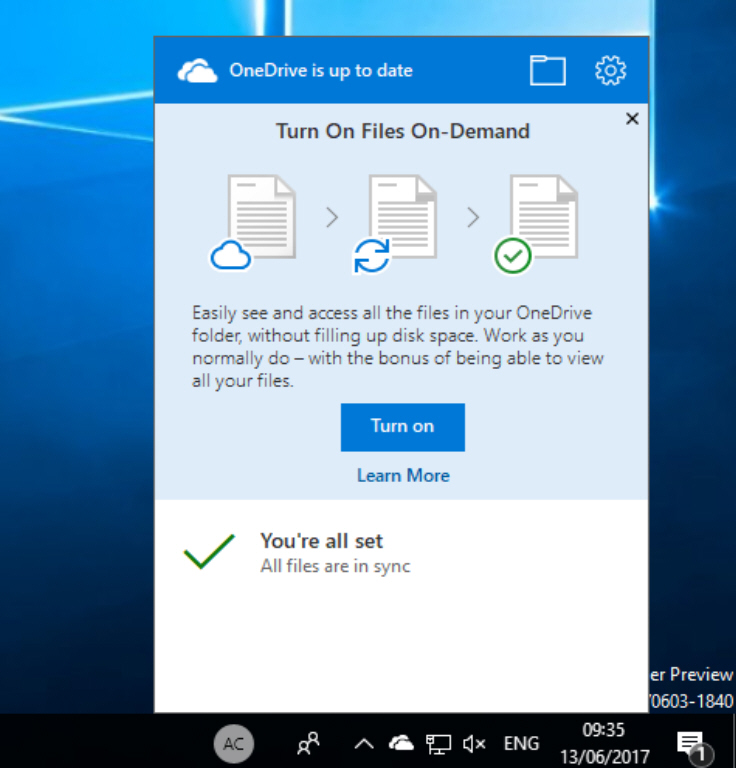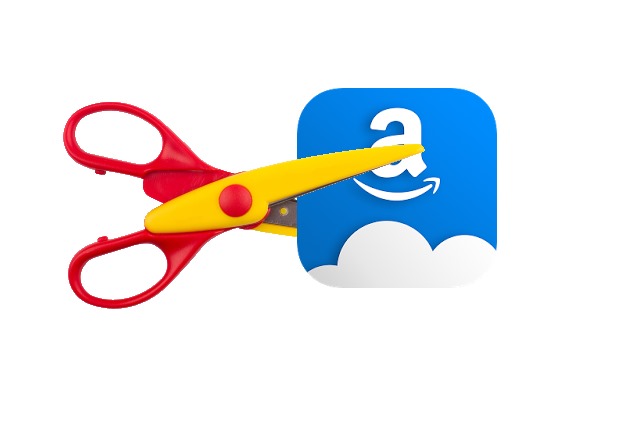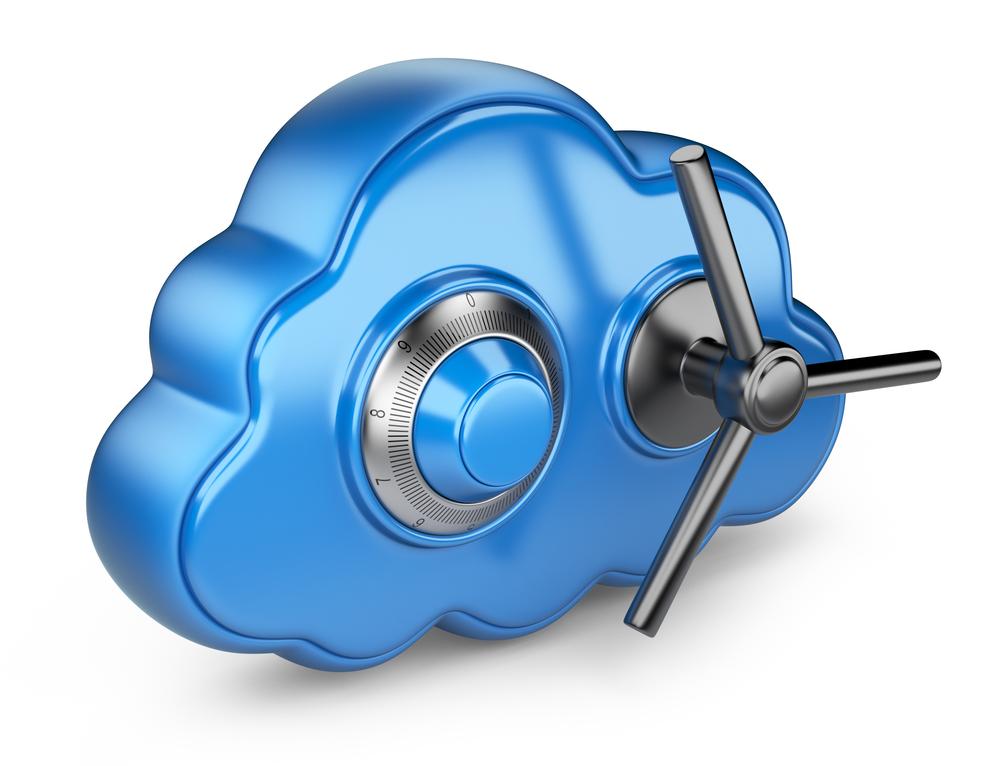
Windows Insiders can now try out OneDrive's Files On-Demand feature -- here's how
Microsoft announced a new Files On-Demand feature for OneDrive at Build last month. This lets you access all of your files in the cloud without having to download them first.
The files you have stored in OneDrive can be viewed in File Explorer and interacted with just like every other file on your device. If you used OneDrive on Windows 8.1 previously, you’ll be familiar with idea as it’s essentially an improved version of the old placeholders feature.

New platform helps integrate big data across the cloud
As enterprises continue to move their data to the cloud, they often find themselves using multiple different services. But a multi-cloud approach brings problems when it comes to managing and integrating information.
To tackle this issue, cloud and big data integration company Talend is releasing a new version of its Talend Data Fabric integration platform that is optimized to manage multi-cloud, enterprise IT environments.

Collaboration cloud services lead to a rise in data violations
Almost 10 percent of data loss prevention (DLP) violations come from collaboration services according to a new report.
The study from cloud security company Netskope shows that as cloud services like HipChat and Slack have increased in popularity enterprises need to put policies in place to protect the information that’s shared.

Do you know where your cloud data is stored?
IT security heads may be drastically underestimating the size of their organization’s cloud presence, leading to potentially huge security risk, a leading expert has warned.
Speaking to ITProPortal at the recent InfoSecurity 2017 event in London, Darren Thomson, EMEA CTO at Symantec, said that it was "a massive, massive concern" that many CISOs and CIOs were unable to accurately say how big their company’s cloud presence was.

Microsoft Azure now supports OpenBSD
Microsoft continues to embrace not only Linux but BSD too, as it just revealed that Azure has added support for OpenBSD. The latest move comes more than two years after the cloud platform officially started to support FreeBSD virtual machines.
The OpenBSD support in Azure comes as a result of a collaboration between Microsoft and network security vendor Esdenera, which also sees the release of an OpenBSD-based firewall in the Azure Marketplace.

EU proposals could grant police direct access to US firms' cloud data
The European Union is seeking ways to make it easier for law enforcement agencies to gather evidence from US tech firms. The European Commission has three proposals that could form the basis of future legislation, and one of them involves granting direct access to individuals' data stored in the cloud.
While the proposals are unlikely to prove popular with the public -- particularly when the UK is already subject to the invasive Investigatory Powers Act -- they are being pushed as a tool in the fight against terrorism.

Amazon kills off unlimited cloud storage option for Amazon Drive
Anyone looking for unlimited cloud storage now has one less option available to them. Amazon is dropping the unlimited storage option for Amazon Drive, meaning that the largest package now available is 30TB.
The unlimited tier has been with us for two years, but it's no longer available for new subscribers, and anyone currently signed up will find their storage space drops when renewal time rolls around. It's not all bad news, however. Amazon Prime subscribers still have access to unlimited cloud storage for photos.

Apple reduces 2TB iCloud monthly price to $9.99, upgrades 1TB users at no extra cost
If you are a hardcore user of Apple products and you need cloud storage, iCloud is your best bet. True, a solution like Dropbox offers better cross-platform support -- including for Linux desktop -- but if you have, for instance, a Mac, iPhone, and iPad, iCloud just works so smoothly. If you are all-in on Apple, choosing anything else will lead to a lesser experience.
Today, iCloud gets even better, as Apple lowers the 2TB monthly price to $9.99 -- what was previously the cost of the now-eliminated 1TB option. Best of all, if you are already signed up for the 1TB tier, you have been upgraded at no extra cost. In other words, Apple has automatically doubled your available storage without the need to jump through any hoops! How cool is that?

Cloud developer platform launches free firewall protection
DigitalOcean, the cloud platform for software developers is launching a free Cloud Firewalls service to reduce the potential attack surface.
Developers can deploy the service quickly without installing or configuring any software, and are able to define what ports are visible on their cloud servers -- known as Droplets -- to minimize risk.

New file system brings added security to the public cloud
With growing numbers of data breaches and increasing pressure from regulations like GDPR, companies need to enact stricter security policies.
Object and cloud storage specialist Scality is addressing this with the launch of Scality RING7, a new software-defined, multi-site file system and object storage solution.

Cisco and IBM team up to boost their security products
Cisco and IBM have announced a new partnership that will see both companies integrate their security services, products and threat intelligence in an effort to bolster their cybersecurity offerings.
Both companies already have sizable security businesses and the partnership will see them share research and services with one another. Cisco's security suite will integrate with IBM's QRadar across networks, end points and cloud while IBM Global Services will offer support in managed security services to the company.

Migrating your contact center to the cloud: Top five mistakes
If there is a business area that is deeply affected by digital transformation it is customer service, which is rapidly becoming re-branded as customer experience (CX). According to a Walker study, customer experience will overtake price and product as the key brand differentiator by 2020.
Those organizations that are able to deliver a seamless, effortless experience will improve customer loyalty and see their sales soar. This objective is often a challenge for legacy technology infrastructures and many are turning to cloud contact center platforms. However, change on this scale brings risk, and there are some key mistakes that you should try and avoid if possible.

IT analytics platform uses machine learning to improve VMware efficiency
Maintaining performance of business systems is essential, particularly as more applications move to virtual environments.
IT analytics specialist SIOS Technology is expanding the capabilities of its SIOS iQ platform to optimize VMware environments.

Cloud-native controller streamlines web app delivery
Getting the best performance, and thus return on investment from their app projects is essential for an increasing number of organizations.
But in traditional delivery models the optimization layer is either separate from the application servers in the form of a content delivery network (CDN), or requires constant manual management and operation.

How to find the right data center partner
With most businesses today choosing to migrate their IT infrastructure to the cloud, understanding the business benefits and selecting the right data center provider is fundamental to the decision-making process. The UK is leading the way in the adoption of data centers and is the largest thirty-party data center country market within the EU.
Data centers provide the perfect environment to host company data, applications and servers in a secure location, allowing businesses to operate more efficiently, reduce costs, increase resilience and become more agile. Strategically migrating to the cloud will further contribute to long-term growth revenue, due to the continued adoption of cloud based collaboration technologies that eliminate physical and geographical barriers.
